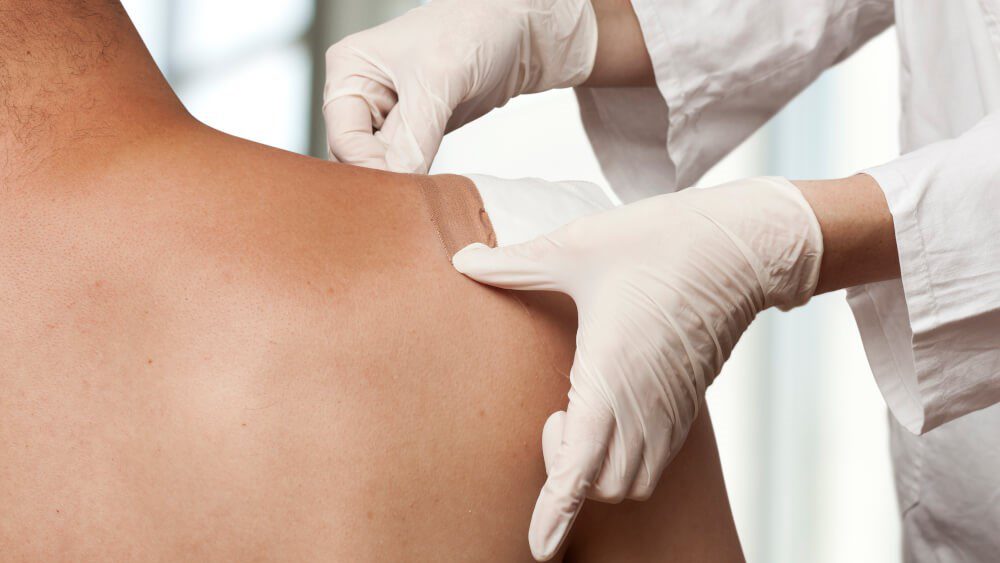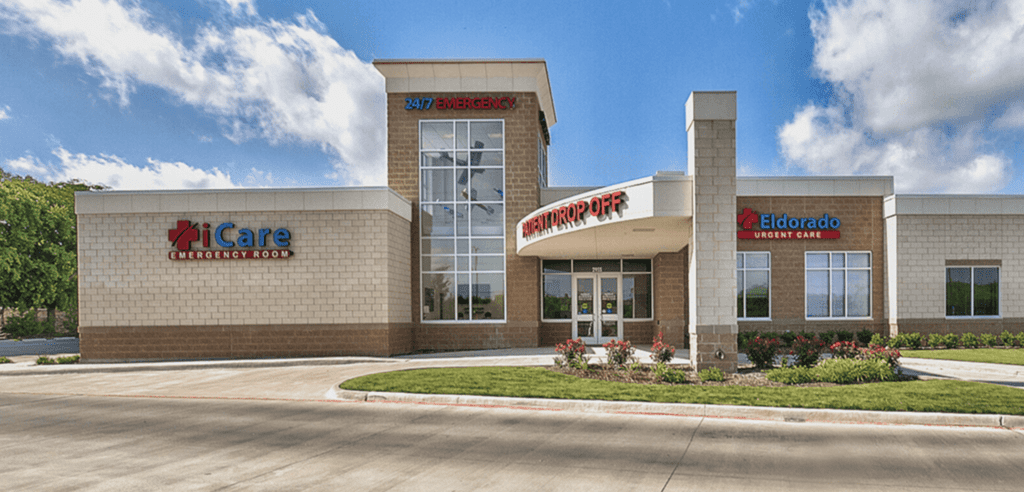In Need of Staples or Stitches: Urgent Care or ER?

Accidents can lead to cuts and scrapes, and while minor ones often heal on their own with a simple bandage, deeper or more severe lacerations raise important questions: “Do I need stitches or staples? Where should I go for treatment – urgent care or the emergency room?” This article aims to guide you through these critical decisions.
Stitches or Staples?
Stitches, also known as sutures, are medical threads or filaments used by healthcare professionals to close and secure wounds, incisions, or lacerations. They play a vital role in wound healing by holding the edges of the skin or tissue together, allowing the body’s natural healing processes to occur underneath. Stitches are typically made of various materials, including absorbable or non-absorbable threads, and can be applied in a variety of patterns depending on the type and location of the wound.
Staples, in the context of medical procedures, refer to metal clips or fasteners that healthcare professionals use to close and secure certain types of wounds, incisions, or surgical openings. These staples are often made of stainless steel and come in various sizes and designs to suit different clinical needs. Stapling is a method of wound closure that is quick and efficient, making it particularly useful in situations where rapid closure is essential, such as in emergency trauma cases or during surgery. Staples are considered a viable alternative to sutures (stitches) in many cases, and the choice between the two depends on factors like the type and location of the wound, the patient’s medical condition, and the healthcare provider’s preference and expertise.
Staples are typically applied using a specialized medical stapler, which ensures precise alignment and proper closure of the wound. After the staples have been placed, they hold the edges of the skin or tissue together, allowing the wound to heal properly underneath. Staples are often used for wounds that are long, straight, or in areas with thicker skin, such as the scalp or the back.
The decision to use stitches or staples is typically best left to medical professionals, but there are certain signs to consider. Stitches or staples might be necessary if:
-The cut or the surrounding area feels numb.
-The cut is exceptionally deep, jagged, long, or gaping.
-Bleeding persists or the wound refuses to close, even with direct pressure.
-The cut is located in sensitive areas like the face, genitalia, or over a joint.
-The cut resulted from a bite or involved a foreign object.
-Cosmetic concerns are a factor.However, puncture wounds or very shallow cuts with smooth edges might not require stitches or staples.
If you’re unsure, seeking medical attention is the safest course of action.

Staples, Stitches and Derma-bond: Urgent Care or ER?
Deciding where to seek medical care for lacerations depends on the severity of the cut and its location.
Emergency Care should be sought when:
-The cut is exceptionally deep, spurting bright red blood, has torn edges, or is located on a joint.
-Muscles, veins, or other internal structures are exposed.
-The wound is on the face, scalp, or contains an embedded object.
-Bleeding continues profusely despite applying pressure.
Stitches or staples are essential for:
-Closing deep cuts, lacerations, or bites.
-Stopping bleeding.
-Repairing underlying tissue damage.
-Minimizing infection risks.
-Reducing scarring.
If your injury doesn’t fall into these categories, you might not need stitches or staples.
Urgent Care clinics are suitable for various situations, such as straight cuts, shallow wounds, or those with embedded dirt. Urgent care for minor cuts often include using techniques like Derma-bond. In cases of straight cuts or shallow wounds, where stitches or staples may not be necessary, Derma Bond, a medical adhesive, can be applied. This quick and effective method allows for the secure closure of minor wounds, providing efficient and convenient care for patients seeking prompt treatment for their injuries.
If uncertainty persists, it’s wise to visit the nearest walk-in clinic for a professional evaluation. Visit iCare ER & Urgent Care, with locations in Frisco and Fort Worth, TX, may be in order. Their emergency rooms, staffed with board-certified physicians, are open 24/7 and equipped to handle the closure of minor cuts, sutures or staples for deep cuts, bites, and other injuries.
Caring for Stitches or Staples
After receiving stitches or staples at an emergency room, following the physician’s instructions is crucial to prevent infection. Gently clean the wound with mild soap and clean water. Apply antibiotic cream if prescribed before re-dressing. Ensure the dressing is loose to maintain blood flow and change it daily. If you notice swelling, redness, or tenderness, seek immediate medical attention to rule out infection.
Staple removal is a crucial aspect of follow-up care provided at urgent care clinics often scheduled as a follow-up appointment to ensure a smooth and safe recovery process. During the appointment, healthcare professionals carefully and painlessly remove the staples.
What to Expect at iCare ER & Urgent Care
Upon arrival for treatment of lacerations and other open wounds, a board-certified ER physician will conduct a thorough examination, assessing the wound’s cause and severity, and review your medical history. Treatment will depend on the wound’s depth, size, and potential infection. The wound will be cleaned and stitched or stapled if necessary, followed by dressing or bandaging to facilitate proper healing. Antibiotics may be prescribed as needed.
iCare ER & Urgent Care locations in Frisco and Fort Worth, TX offer a unique “hybrid” approach with both emergency room facilities and urgent care services in one location. Their facilities are equipped to handle both emergencies and minor urgent care issues. Whether you require stitches, staples, or other medical assistance, they can efficiently address your needs. Walk-ins are welcome, or you can make an appointment online today.
FOLLOW US ON SOCIAL FOR MORE RELEVANT,
LOCAL HEALTH INFORMATION